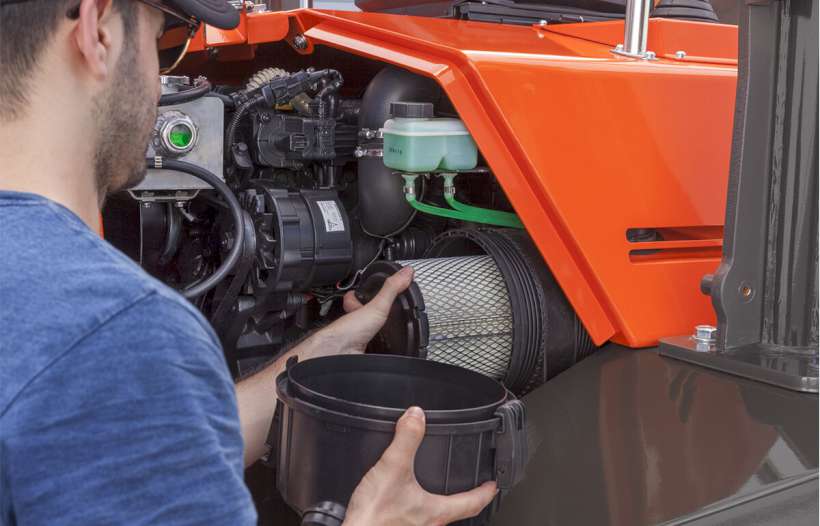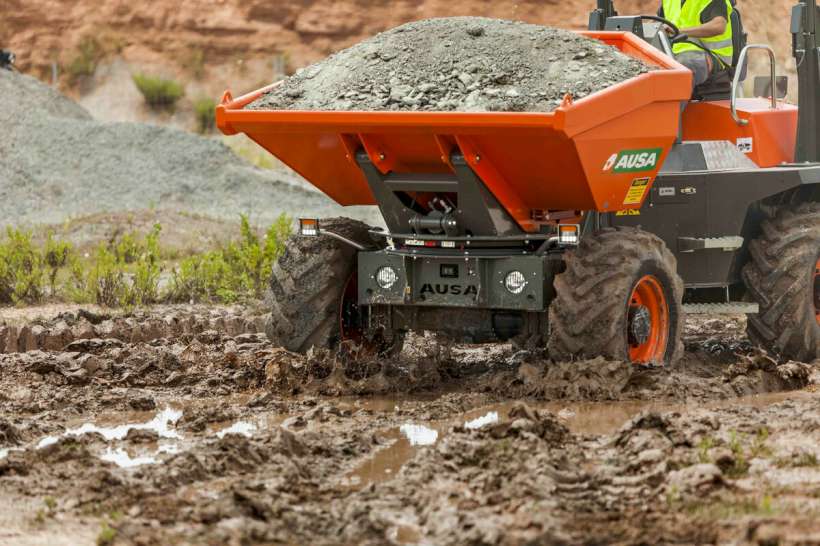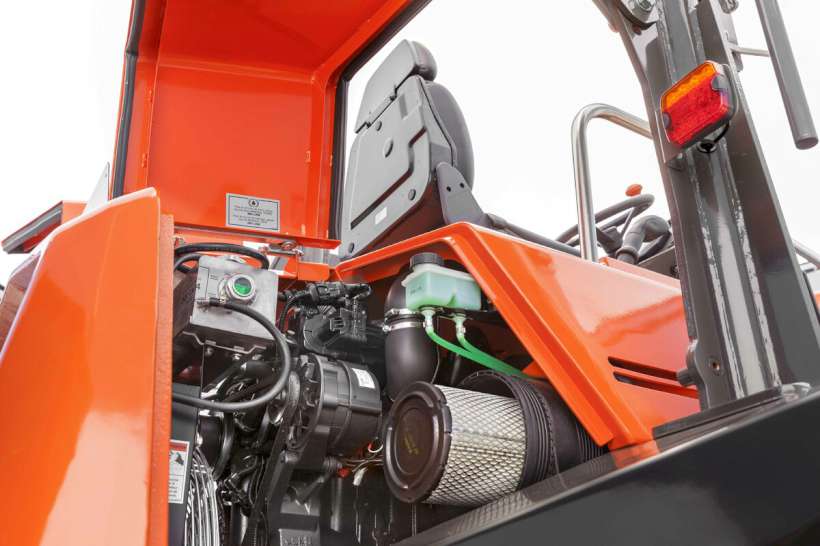Ausa, a global manufacturer of compact industrial vehicles for moving materials and road maintenance has given us their professional advice on the best way to maintain your site dumpers.
As we know, by its very nature, a dumper is going to undergo intensive use and it will mostly be used in very adverse off-road conditions. Therefore, it is important to maintain it properly, to make sure that it is always in perfect working order.
Maintaining your dumper properly will prolong the life of its components and, as a result, the proper operation and useful life of your machine.
With this goal in mind, but also with a view to making your machine safer, more efficient and more environmentally friendly, we want to provide you with a basic guide, with tips to help you to make sure that your wheel dumper is always ready to rise to the challenge.

At the start of each working day, we recommend that the operator checks the following:
Fluid levels: check the levels of coolant, engine oil, hydraulic oil and brake fluid every day. If these levels are OK, you will prevent any premature wear of certain components which, in the long term, may lead to more serious problems. You should also check that the machine is free of leaks.
Filters: check the condition of the air filter every day and clean it with pressurised air if necessary, to prevent any clogging.
Engine: check the condition of the radiator and clean it if necessary. Check the condition of the alternator belt and the engine’s peripheral components.
Tyres: check their pressure and overall condition, looking for signs of severe wear or possible punctures.
Besides the daily recommendations, bear in mind that, to ensure the proper operation of your dumper, you have to perform regular maintenance of wearing parts and lubricants. We recommend using original spare parts, because only they are the same as the top-quality components used to manufacture it. Installing other spare parts may hinder its proper operation and reduce its service life.

Before performing any maintenance, it is important to follow these personal safety tips:
- The skip should be empty.
- Keep the gear selector in neutral.
- Apply the parking brake.
- Turn off the engine.
- Engage the skip locks if the procedure requires it to be raised.
- Immobilise the chassis with the locks if the procedure requires its alignment.
- Disconnect the battery if you have to handle the electrical system.
Basic maintenance schedule of a dumper based on hours of use:
Check after the first 50 hours of use
- Lubricate the various parts marked on the machine itself, and its joints, to prevent premature wear.
- Replace the hydraulic oil cartridge filter and fuel pre-filter.
- Change the transmission oil.
- Replace the transmission oil filter element (in power shuttle transmissions).
Check every 250 hours
- Replace the fuel pre-filter.
- Make sure that there are no leaks, vibrations or abnormal noises.
Check every 500 hours
- Change the oil and replace the engine oil filter. Always use the type of lubricant recommended for your model in the operator’s manual.
- Replace the air filter.
- Replace the cab’s air filters (if mounted).
Check every 1,000 hours
- Replace the alternator belt.
- Replace the air conditioning belt (if installed).
- Replace the fuel filter.
- Replace the hydraulic oil cartridge filter.
- Change the hydraulic oil and clean the oil filter.
- Change the transmission oil. Also replace the filters in power shuttle transmissions.
Check every 1,500 hours
- Change the coolant.
- Replace the air filter intake pipe.
- Replace the radiator hose and clamps.
- Replace the fuel lines and clamps.
- Change the brake fluid.
- Check the condition of the battery.
- Make sure that the air conditioning is working properly (if installed).
Check every 3,000 hours
- Check the hydraulic hoses and connections.

Finally, if equipped with this feature, make sure that your dumper automatically performs particulate filter regeneration (DPF) regularly. You can check the level of clogging on the control panel.
If the dumper is used for very short periods of time, the DPF may not heat up enough to perform automatic regeneration, so you will have to make sure that you do this manually when the icon on the panel indicates that it is necessary. Remember that this is an important point and a failure to use it properly may lead to expensive repairs.
